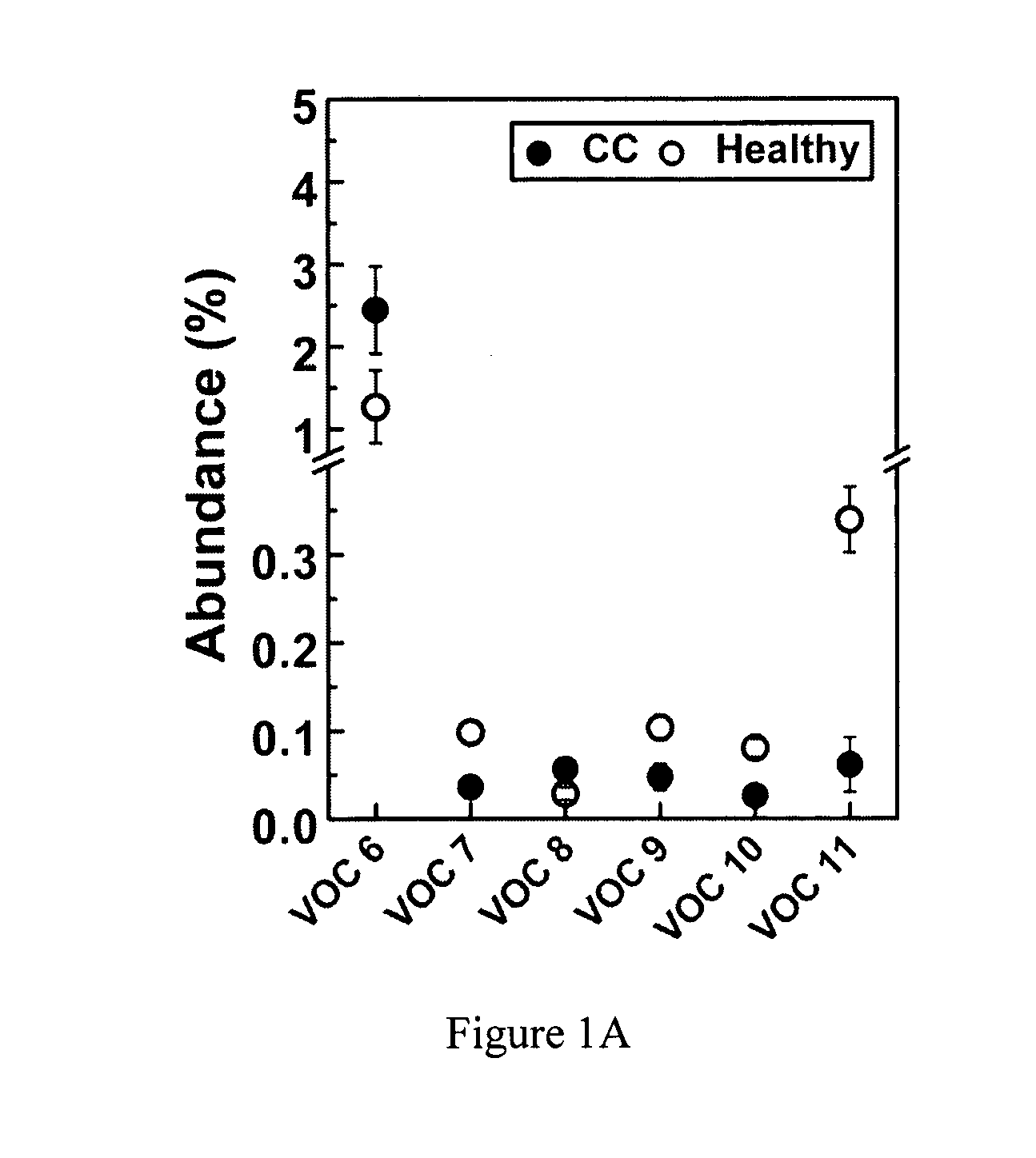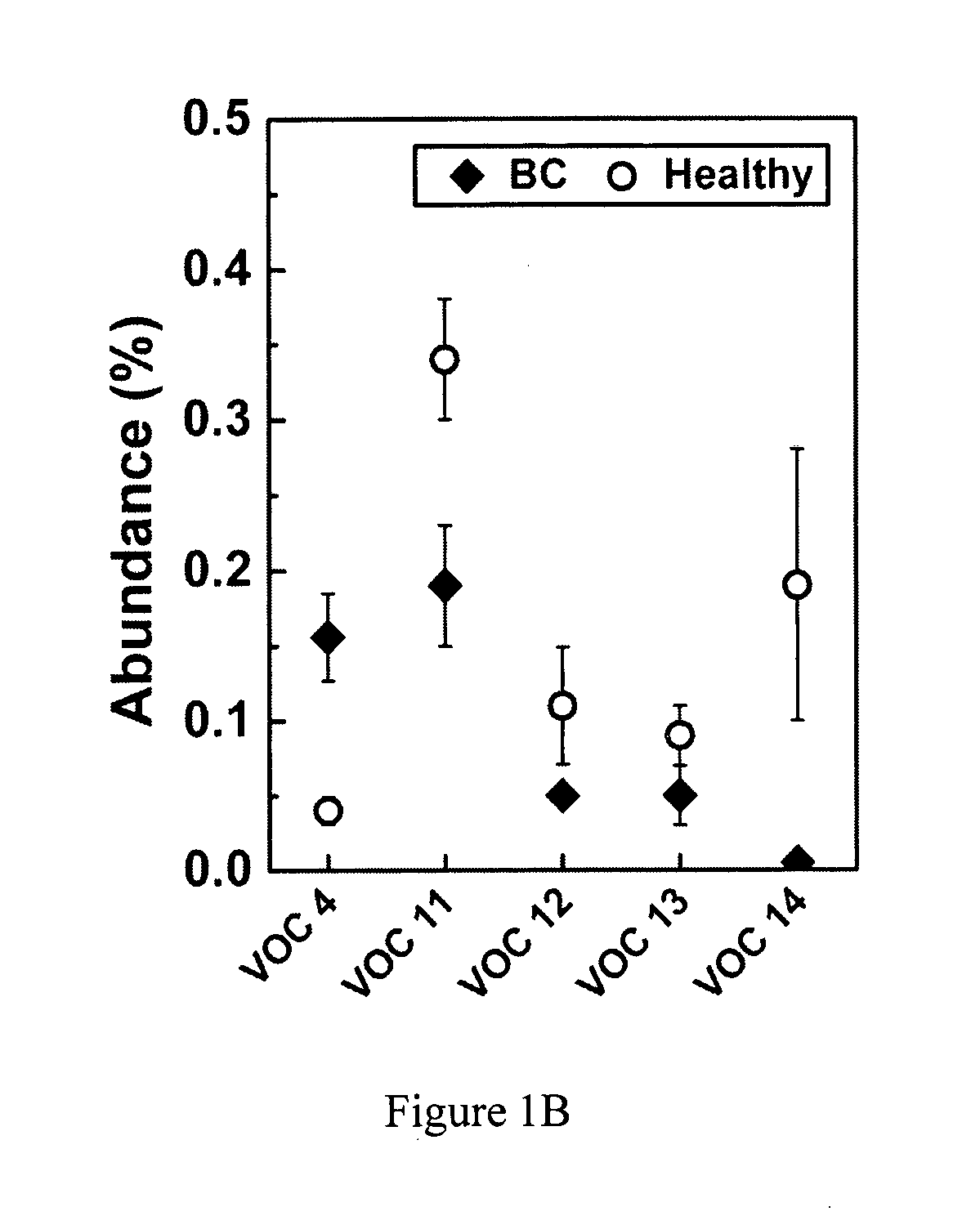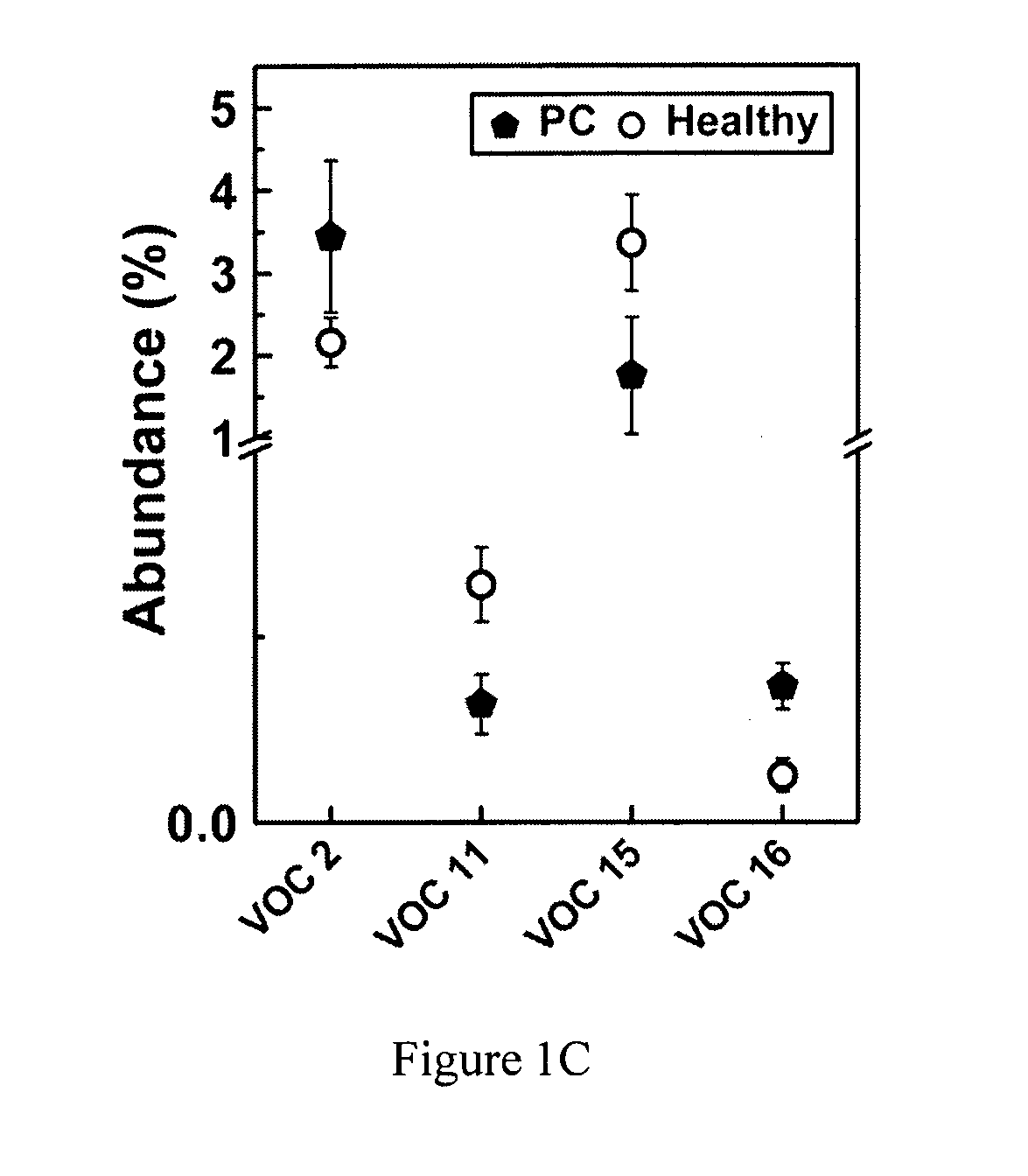Volatile organic compounds as diagnostic markers for various types of cancer
a technology of volatile organic compounds and diagnostic markers, which is applied in the field of volatile organic compounds, can solve the problems of unmet needs, failure to determine a single set of vocs to be used as diagnostic tools for lung cancer screening, etc., and achieve the effect of improving sensitivity and specificity in diagnosing cancer through breath samples, and different levels in breath samples
- Summary
- Abstract
- Description
- Claims
- Application Information
AI Technical Summary
Benefits of technology
Problems solved by technology
Method used
Image
Examples
example 1
Test Population
[0127]Breath samples were taken from 46 volunteers aged 30-75, who had not ingested coffee or alcohol for at least 1 hour and 12 hours, respectively, after signed consent. The volunteers were divided as follows: 17 primary colon cancer patients, 15 primary breast cancer patients, and 14 primary prostate cancer patients. Additionally, 18 healthy individuals that matched the tested cancer patients in age and lifestyle were used as controls. All cancer patients were tested directly after being diagnosed by conventional clinical methods (e.g. computed tomography scan, colonoscopy, mammography etc.) and prior to chemotherapy and / or other cancer treatment. No breath collection was carried out in the 4 days following the biopsy. The clinical characteristics of the study population for cancer patients and healthy volunteers are listed in Table 1. Additional breath samples were taken from 59 healthy volunteers, aged 20-79, for studying the effect of various confounding factors...
example 2
Breath Collection
[0128]Exhaled breath was collected in a controlled manner from the test population of example 1. Inhaled air was cleared of ambient contaminants by repeatedly inhaling to total lung capacity for 5 minutes through a mouthpiece (purchased from Eco Medics) that contained a filter cartridge on the aspiratory port, thus removing more than 99.99% of the exogenous VOCs from the air during inspiration. Immediately after lung washout, the subjects exhaled through a separate exhalation port of the mouthpiece against 10-15 cm H2O pressure to ensure closure of the vellum to exclude nasal entrainment of gas. Exhaled breath contained a mixture of alveolar air and respiratory dead space air. Subjects exhaled into the breath collector which automatically filled the dead space air into a separate bag and the alveolar breath into a 750 ml Mylar sampling bag (polyvinyl fluoride, purchased from Eco Medics) in a single-step process. The Mylar bags were re-used and thoroughly cleaned pri...
example 3
GC-MS Measurements
[0129]Breath samples were analyzed with gas chromatography-mass spectroscopy (GC-MS; GC-6890N; MS-5975; Agilent Technologies Ltd.) combined with solid phase microextraction (SPME). The SPME technique is used for pre-concentrating VOCs from the breath samples. A manual SPME holder with an extraction fiber coated with: 1) Polydimethylsiloxane (PDMS), 2) Polydimethylsiloxane-Divinylbenzene (PDMS / DVB), or 3) Polydimethylsiloxane-Carboxen (PDMS / Carboxen) (purchased from Sigma-Aldrich) was inserted into the Mylar bag for 20-30 minutes. The SPME holder was then delivered to the GC-MS. Between 500 and 1,000 cm3 of each breath sample was concentrated via the SPME method during the extraction period of 2 hours, and delivered to the GC-MS using a manual SPME holder. The extracted fiber in the manual SPME holder was inserted into a GC injector which operated using the splitless model. The oven temperature profile was: 60° C., 2 min, 8° C. / min to 100° C., 15° C. / min to 120° C.,...
PUM
 Login to View More
Login to View More Abstract
Description
Claims
Application Information
 Login to View More
Login to View More - R&D
- Intellectual Property
- Life Sciences
- Materials
- Tech Scout
- Unparalleled Data Quality
- Higher Quality Content
- 60% Fewer Hallucinations
Browse by: Latest US Patents, China's latest patents, Technical Efficacy Thesaurus, Application Domain, Technology Topic, Popular Technical Reports.
© 2025 PatSnap. All rights reserved.Legal|Privacy policy|Modern Slavery Act Transparency Statement|Sitemap|About US| Contact US: help@patsnap.com



